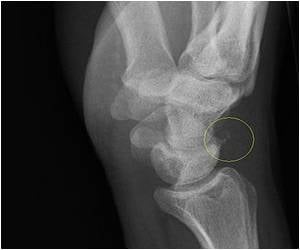Mirrors could soon reflect the health of patients with cancer, instead of undergoing blood tests to see if a tumor is growing back.
Mirrors could soon reflect the health of patients with cancer, instead of undergoing blood tests to see if a tumor is growing back.
A simple instrument which will bounce a low-power laser beam off a silicon mirror has to be implanted under the patient's skin. Computer analysis of the reflected beam will show the prognosis.Some cancers of the prostrate and colon release specific chemical markers into the bloodstream as they develop. Doctors can spot the cancer by looking for these markers.
Stephen Mather, head of Nuclear Medicine at Bartholomew's Hospital, UK, states that just a single tumour cell will shed the markers.
After surgery or chemotherapy treatment, cancer patients have blood tests taken every 4 months upto 5 years to check for the chemical markers which warn about the regrowth of tumor cells.
Now a biomedical company in Worcestershire, have developed a better way to pick up signs of cancer. They intend to insert mirrors under the skin that change their reflectivity as cancer marker builds up in the bloodstream. The reflectivity can be checked by firing an infra red beam at the mirror through the skin and measures of the reflected light are taken.
The team heads Roger and Leigh say," getting the optical properties of mirror rights is crucial, light only passes easily through the skin over a tight range of infrared wavelengths but slicon surfaces dont reflect well at these wavelengths. And if the mirror was highly polished it would quickly loose its finish under the skin as it will breakdown. But making the silicon sheets porous it can reflect light at the right wavelengths even if the surfaces are degraded.
Advertisement
The researchers found that the mirrors slowly broke down into harmless silic acid in simulated human blood plasma. Their next process will be to fill in the pores of the mirror with chemicals that bind to specific cancer markers, these markers would leach into tissues around the implant and bind to the chemicals in the mirror's pores to give desirable effects.
Advertisement





